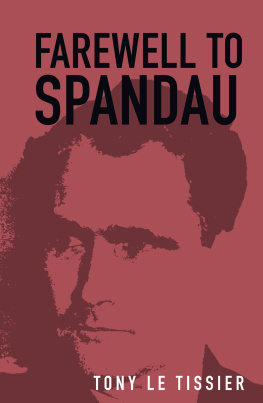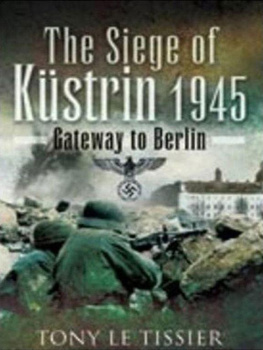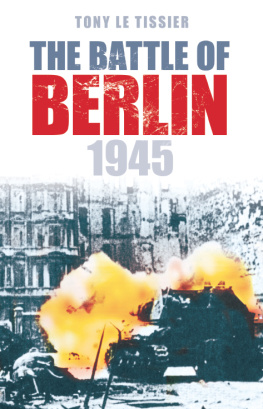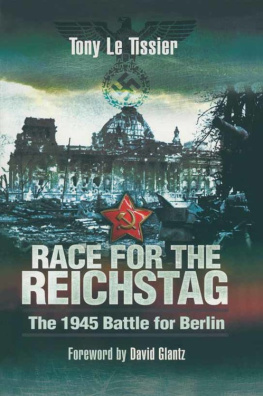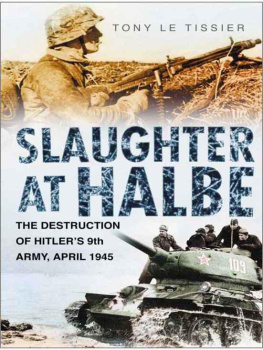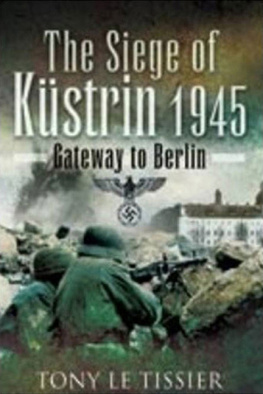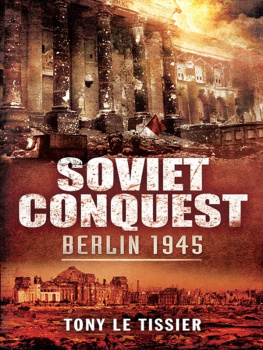Glossary of abbreviations used in the text
ACA Allied Control Authority
AK Allied Kommandatura
APM Assistant Provost-Marshal (Lieutenant-Colonel RMP)
BAOR British Army of the Rhine
BASC Berlin Air Safety Centre
BMG British Military Government
BMH British Military Hospital
BRIXMIS British Commander-in-Chiefs Mission to the Soviet Forces in Germany
CO Commanding Officer
CSM Company Sergeant-Major (Warrant Officer Second Class)
FCO Foreign and Commonwealth Office
GDR German Democratic Republic
GMFB Gouvernement Militaire Franais de Berlin
GRU Soviet Military Intelligence
GSFG Group of Soviet Forces in Germany
HQ Headquarters
KGB Soviet Ministry of State Security
Kripo Berlin Criminal Police
NAAFI Navy, Army and Air Force Institutes
PSA Property Services Agency
QA Quadripartite Agreement on Berlin of 1971
RAF Royal Air Force
RE Corps of Royal Engineers
RMP Corps of Royal Military Police
RSM Regimental Sergeant-Major (Warrant Officer First Class)
SERB Soviet External Relations Branch (GSFG)
SIB Special Investigations Branch (RMP)
Toc H Talbot House a welfare service providing canteen and newspaper facilities for the armed forces
I
Spandau Allied Prison
On 17 August 1987, Allied Prisoner No. 7, Rudolf Hess, died at the age of ninety-three. This profoundly evil man, justly convicted and condemned... at Nuremberg, had taken his own life, confounding all the quadripartite contingency plans covering his demise. He had been in captivity for over forty-eight years, ever since his spectacular flight to Scotland in May 1941, the last twenty years as the only inmate of Spandau Allied Prison.
For the last few years of his life I was the British representative on the Board of Governors of Spandau Allied Prison. As such I was responsible to the British government for the custody and welfare of this extraordinary character, whose career, actions and fate have aroused so much worldwide curiosity and speculation over the years.
I was serving as a lieutenant-colonel in the then Corps of Royal Military Police (RMP) when I came to Berlin in January 1976 to take up the appointment of Assistant Provost-Marshal (APM) at the British Sector Headquarters. As APM the confusing use of the prefix Assistant for lieutenant-colonels staff appointments was later dropped and the RMP organisation in Berlin changed I was responsible to the British Commandant (the Major-General in charge of the British Sector) for both 247 (Berlin) Provost Company and its Helmstedt Detachment, which had been my first command as a major back in 196870. This role also entailed responsibility for officially sponsored British traffic on the autobahn corridor connecting Berlin with the Federal Republic (West Germany), liaison with the Soviet traffic control organisations at either end of the corridor and also with the guard detachment at the Soviet War Memorial in the Tiergarten, as well as dealing with incidents involving the East German authorities on the British Sector boundaries.
Unfortunately, the role of APM had diminished in interest since 1970 as the consolidation of the Wall and the wire fencing around the Western Sectors of Berlin reduced the number of border incidents that had previously added zest to the responsibilities involved. Then, in 1977, at a time when the British Army was terribly badly paid, with my financial resources exhausted, three children at boarding schools, and my car in urgent need of replacement, I received the offer of a post of equivalent rank with the Public Safely Branch of the British Military Government (BMG). Acceptance made me financially viable once more and gave me the chance of continuing to live and serve in a city that fascinated me, and still does.
Of course, Murphys Law applied, and a few months later armed services pay and pensions were dramatically increased. However, the prospects of continuing staff duties within the then strictly limited sphere of the RMP, whatever the promotion prospects, held no attractions for me, so I had no regrets on that score. Also my civilianisation involved no dramatic severance from the more pleasant aspects of Army life, as I was to continue in close daily contact, making and retaining even more friends among the military as I stayed and others came and went over the years.
At this point I should explain the basic structure of government in Berlin under Allied occupation, which was not only unique but also somewhat complicated.
The supreme authorities were the ambassadors of the four victorious powers, these being the British, French and American Ambassadors to the German Federal Republic and the Soviet Ambassador to the German Democratic Republic (East Germany). This was a residual capacity from the old, post-war, Allied Control Authority (ACA) days, when Germany was governed from the ACA building in Heinrich von Kleist Park (where in my time the quadripartite Berlin Air Safety Centre [BASC] continued to operate, and would do so until the reunification of Germany).
In 1948 the Soviets walked out of both the ACA and the Allied Kommandatura, the latter establishment being responsible for Greater Berlin, vainly hoping that the system would collapse. This failed to occur, so next in line of seniority in the Western Sectors came the British, French and American Commandants (of major-general rank), each of whom had a Minister as his Deputy Commandant and supporting staff provided by their respective foreign offices to assist and advise them in the governing role. Also directly under the individual Commandants were the military headquarters necessary for maintaining their respective garrisons. By these means, and working within the spirit of the Quadripartite Agreement of 1971 (QA), despite differences of interpretation of its meaning with the Soviets, the Western Allies persistently continued to maintain those basic rights in Berlin which enabled the democratically elected city government at Schnberg Town Hall to function under the Governing Mayor.
Soviet political interests in the Western Sectors were covered from the Embassy on the Unter den Linden, and commercial and consular interests by a Consulate-General introduced under the terms of the QA and located in the American Sector of the city. Both these establishments naturally provided bases for the ubiquitous KGB, the Soviet espionage service.
However, the British Military Government, le Gouvernement Militaire Franais de Berlin and the US Mission, each continued to field members of the various controlling Committees of the Allied Kommandatura in the political, economic, legal and public safety areas, to cover their residual roles in the administration of the city.
My work as Number Two in the Public Safely Branch brought me into close contact with the Berlin Police, as well as my French and American colleagues, and gave me a greater insight into the complex workings of the city, all of which was to prove very useful in my next appointment. Like many others before me, I was fascinated by the genuine spirit of co-operation and commitment to the well-being of the city that existed at all levels among the Western Allies.

